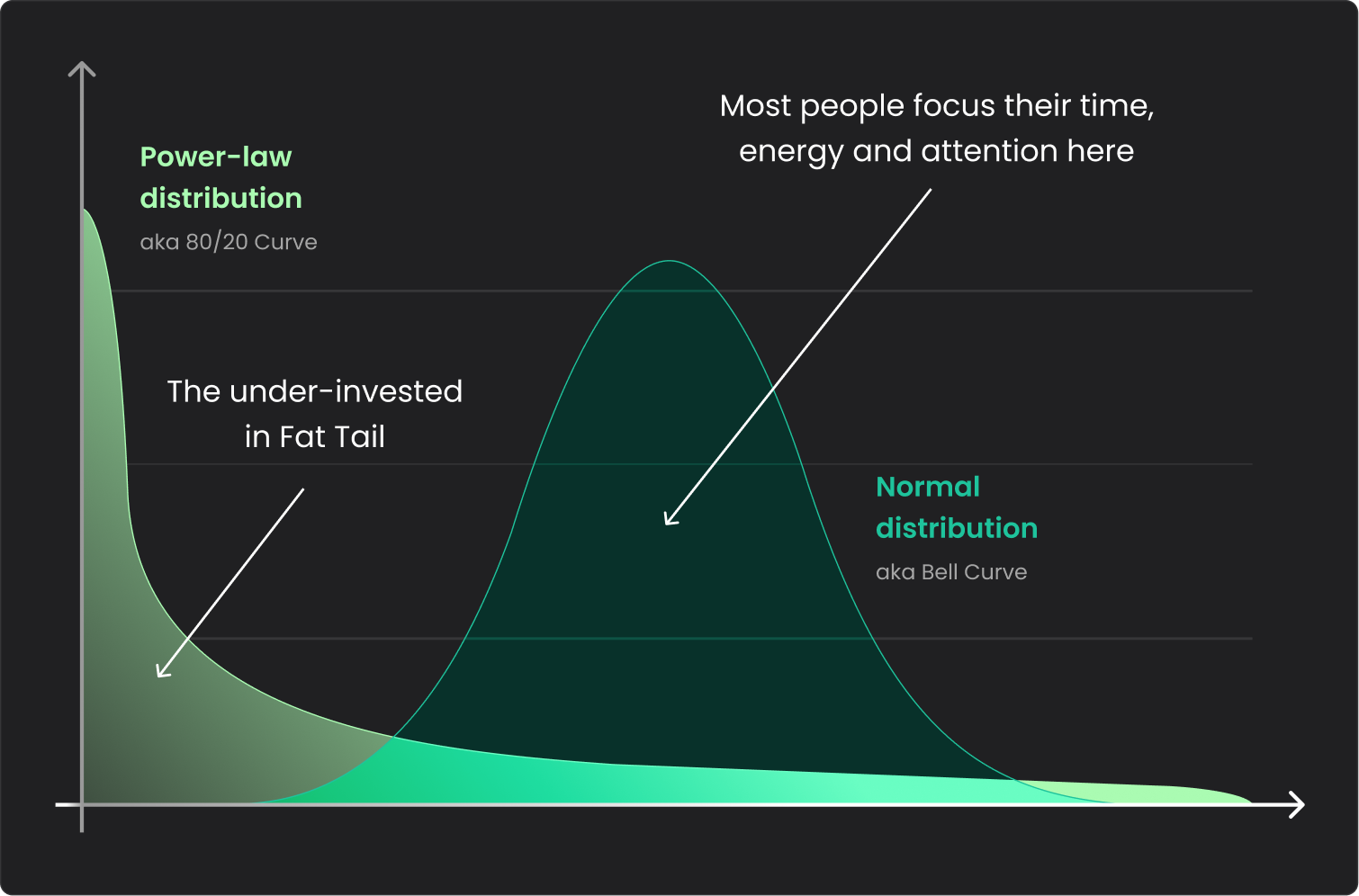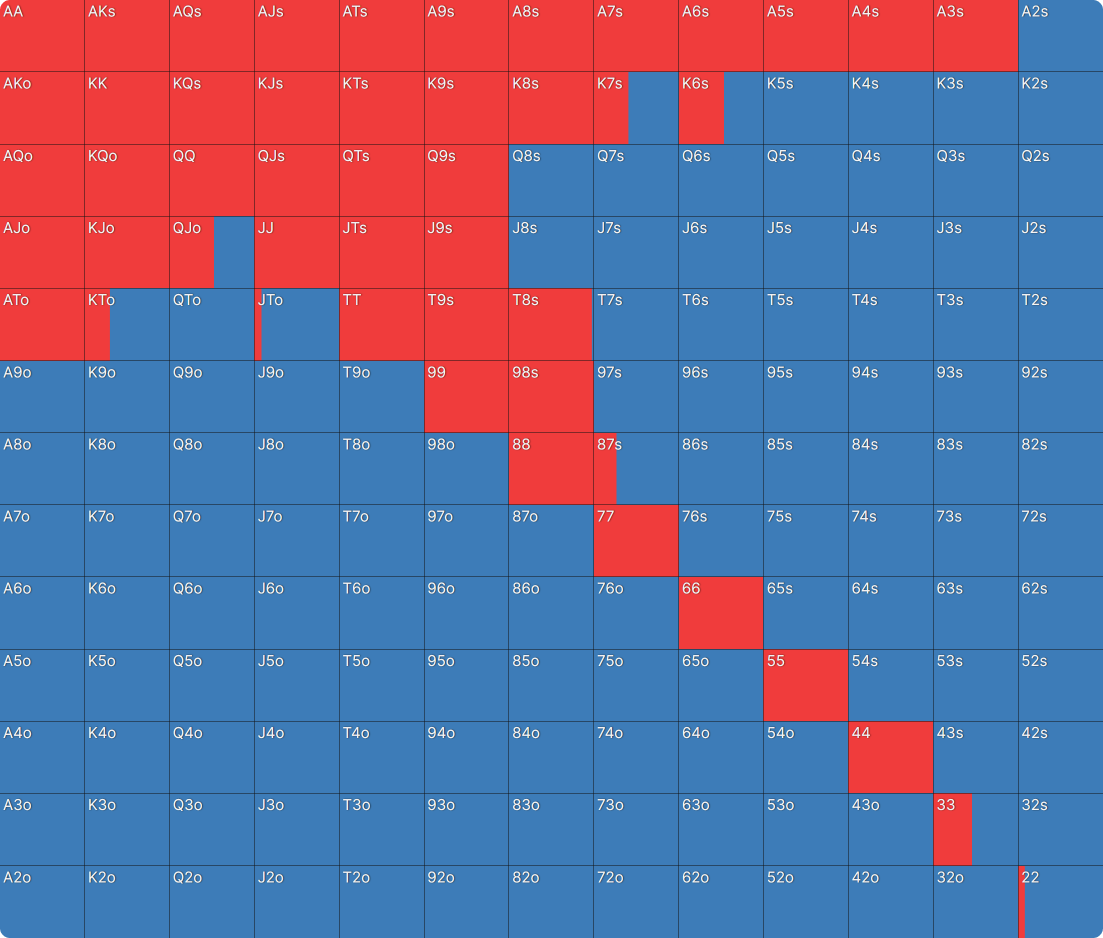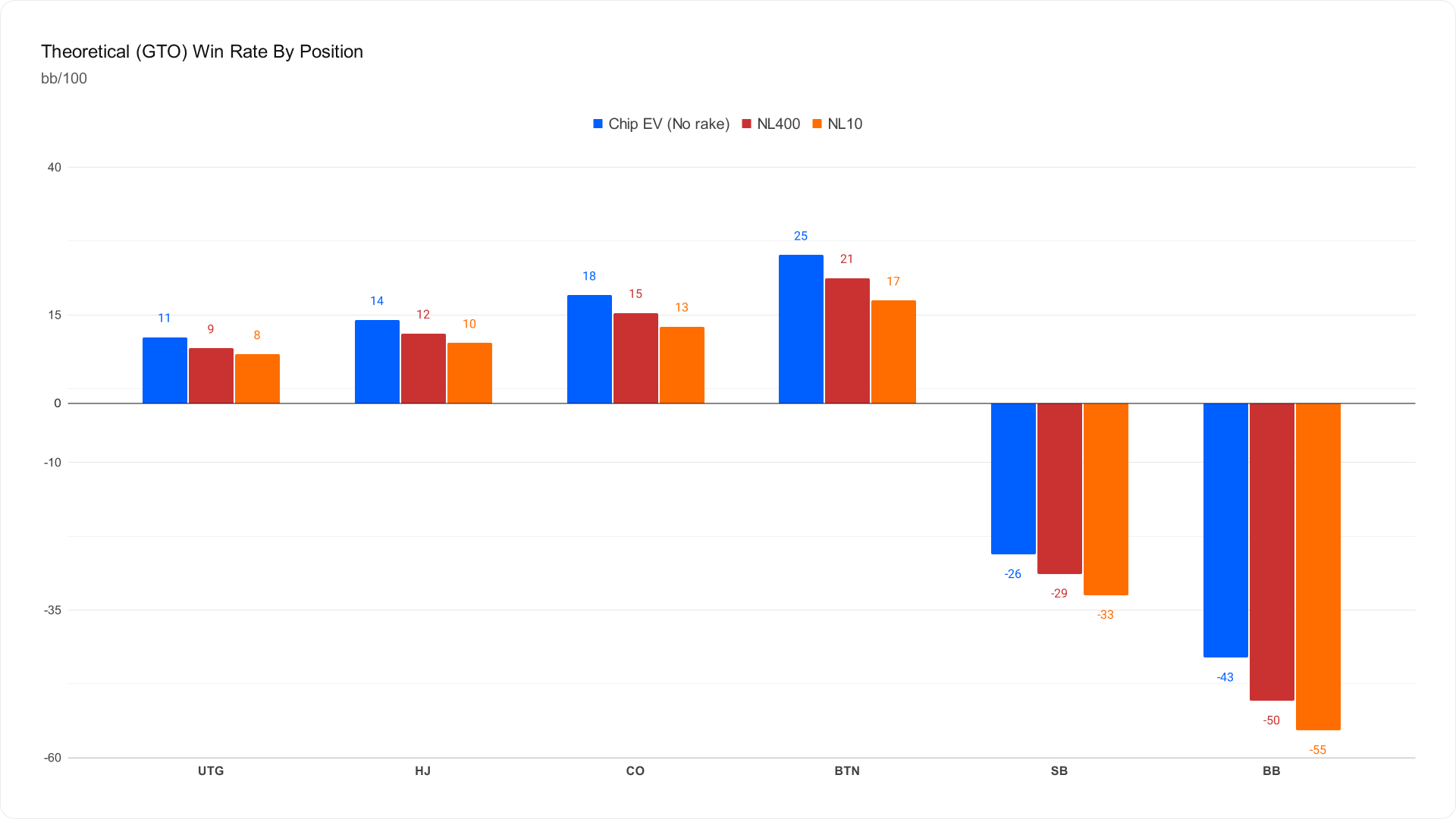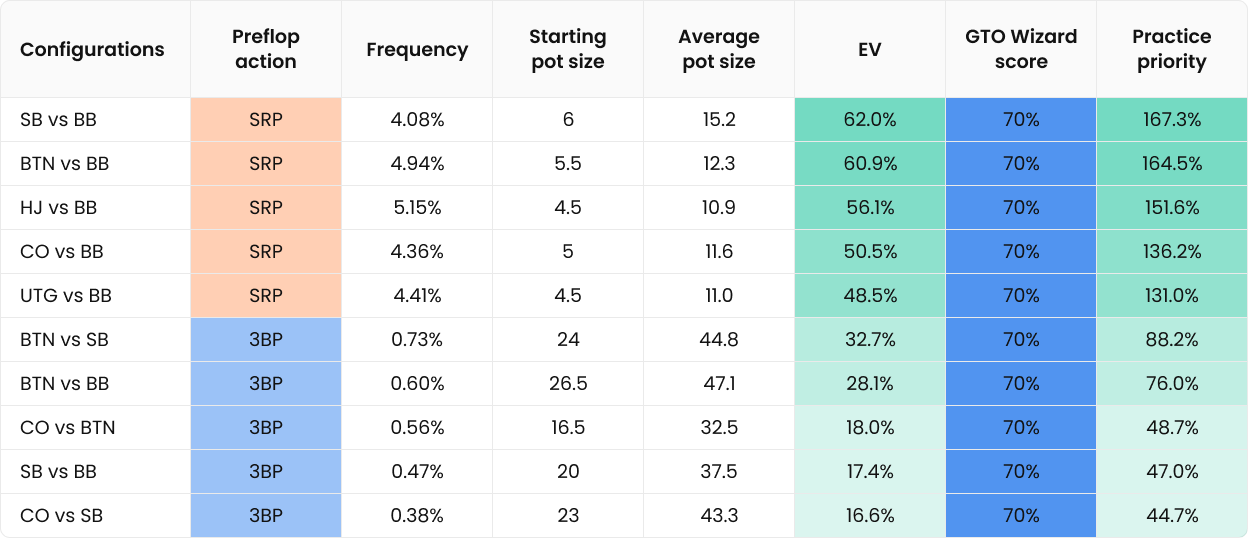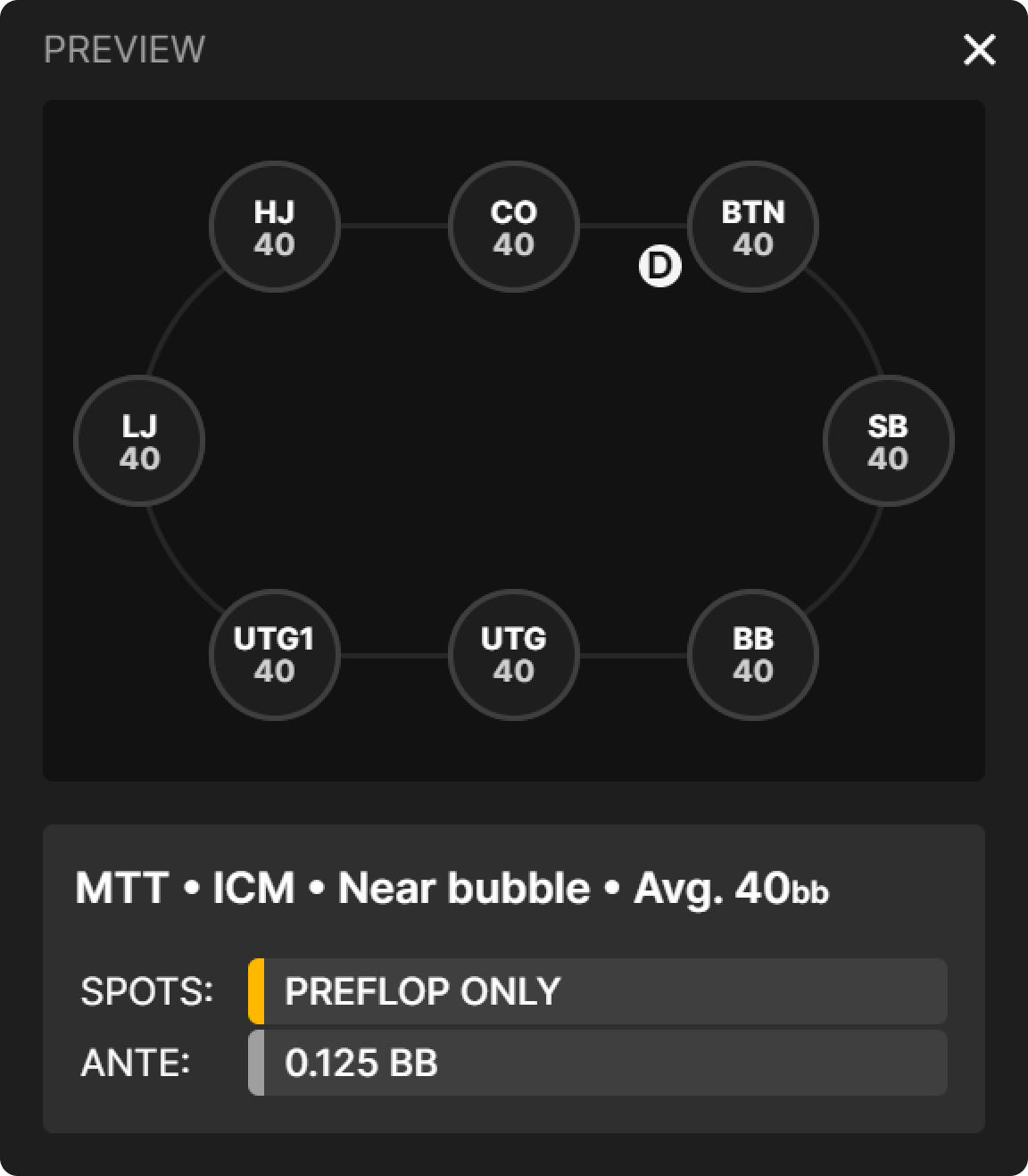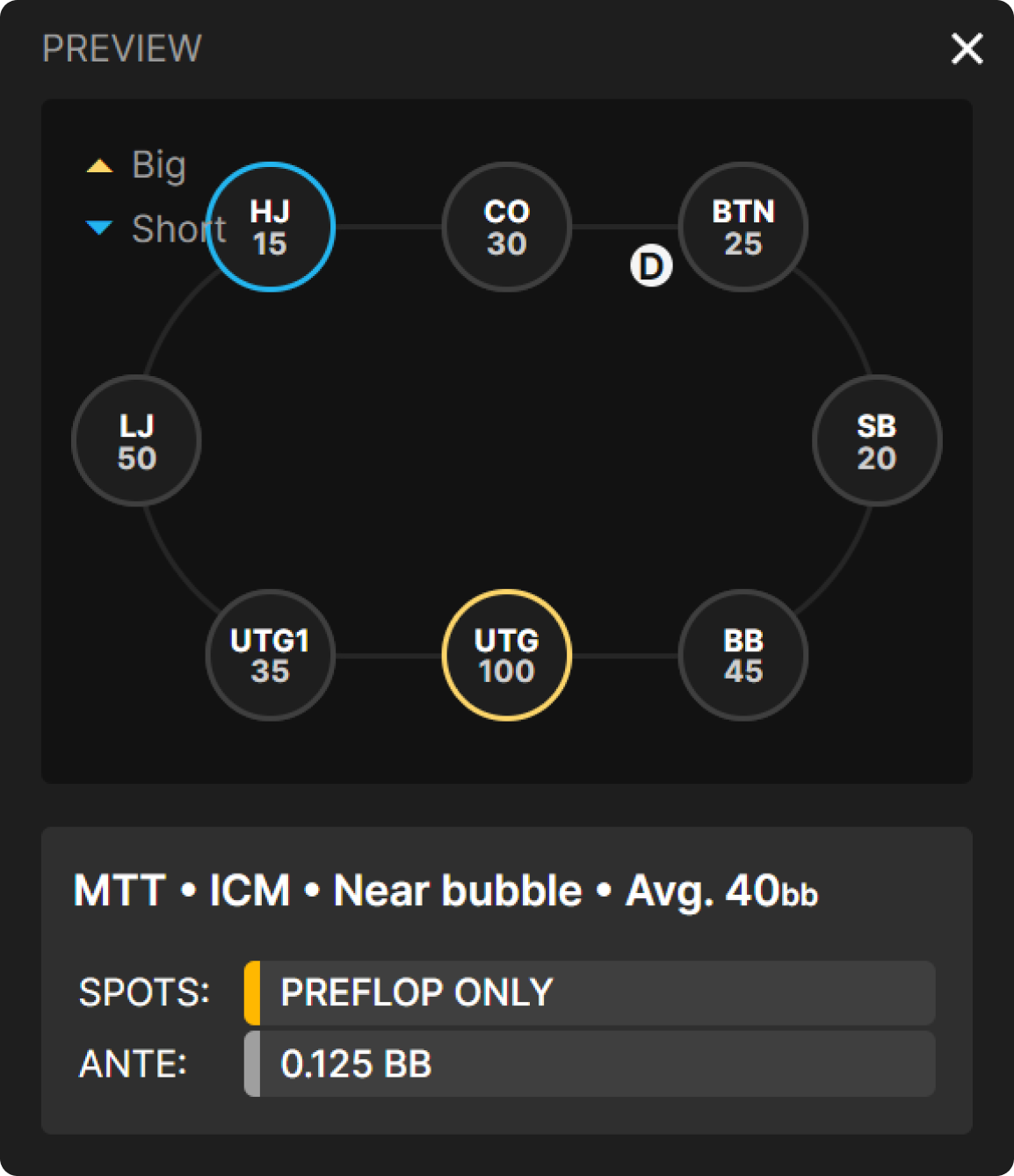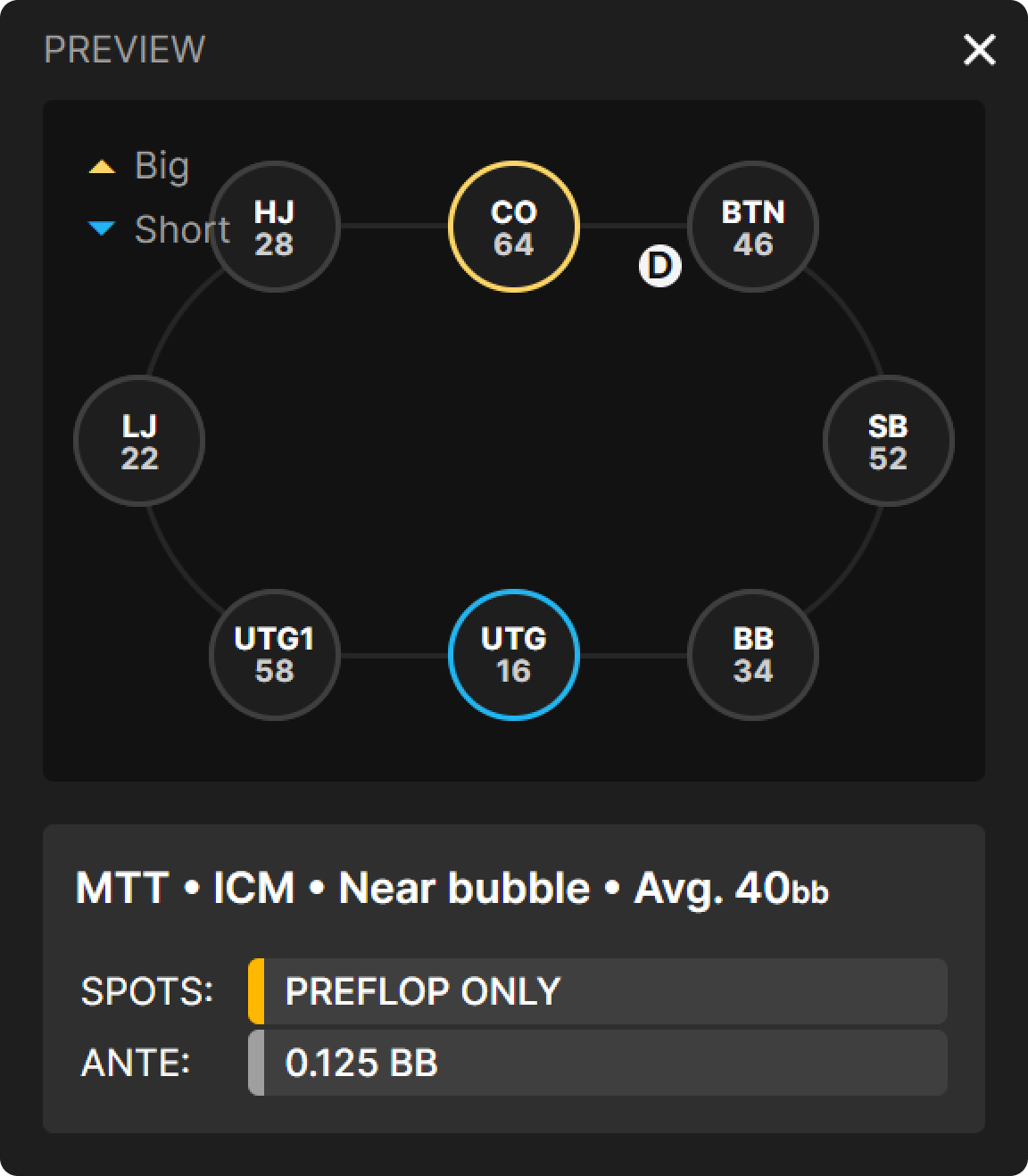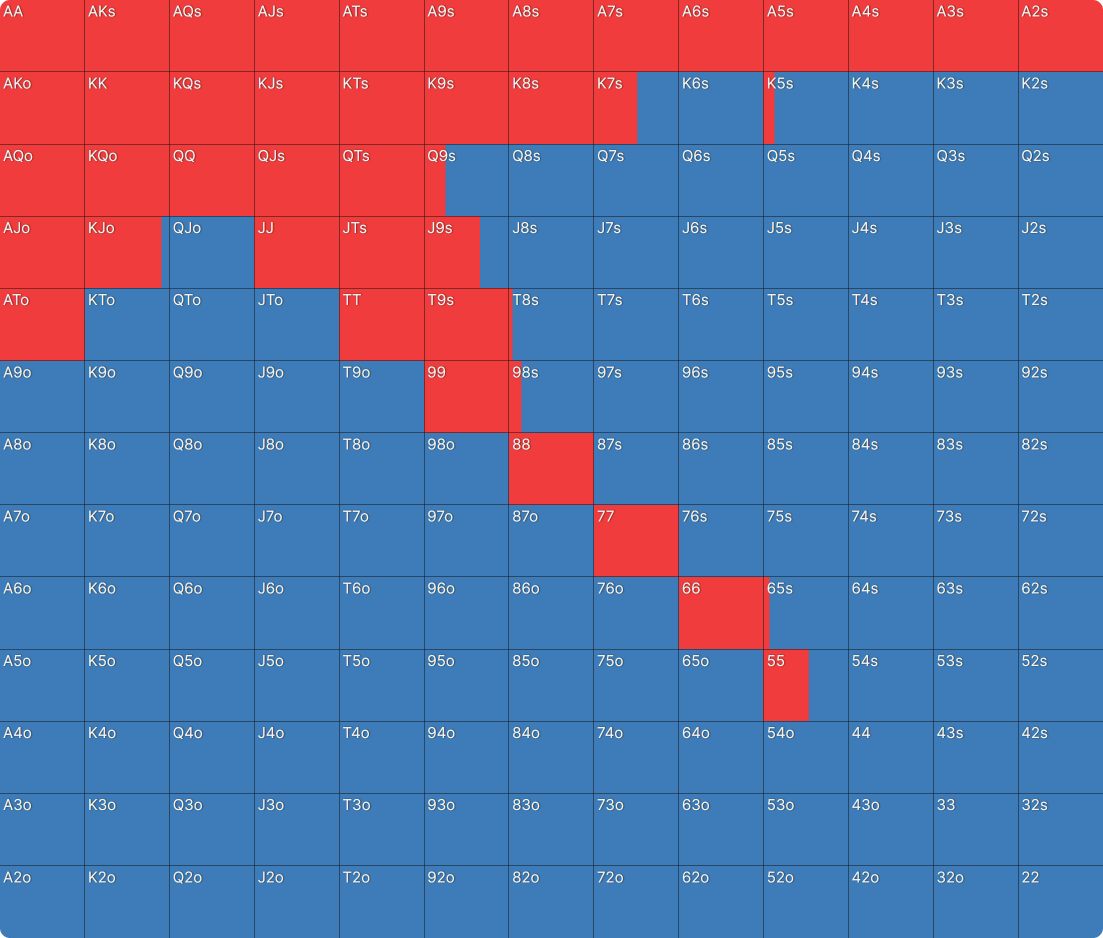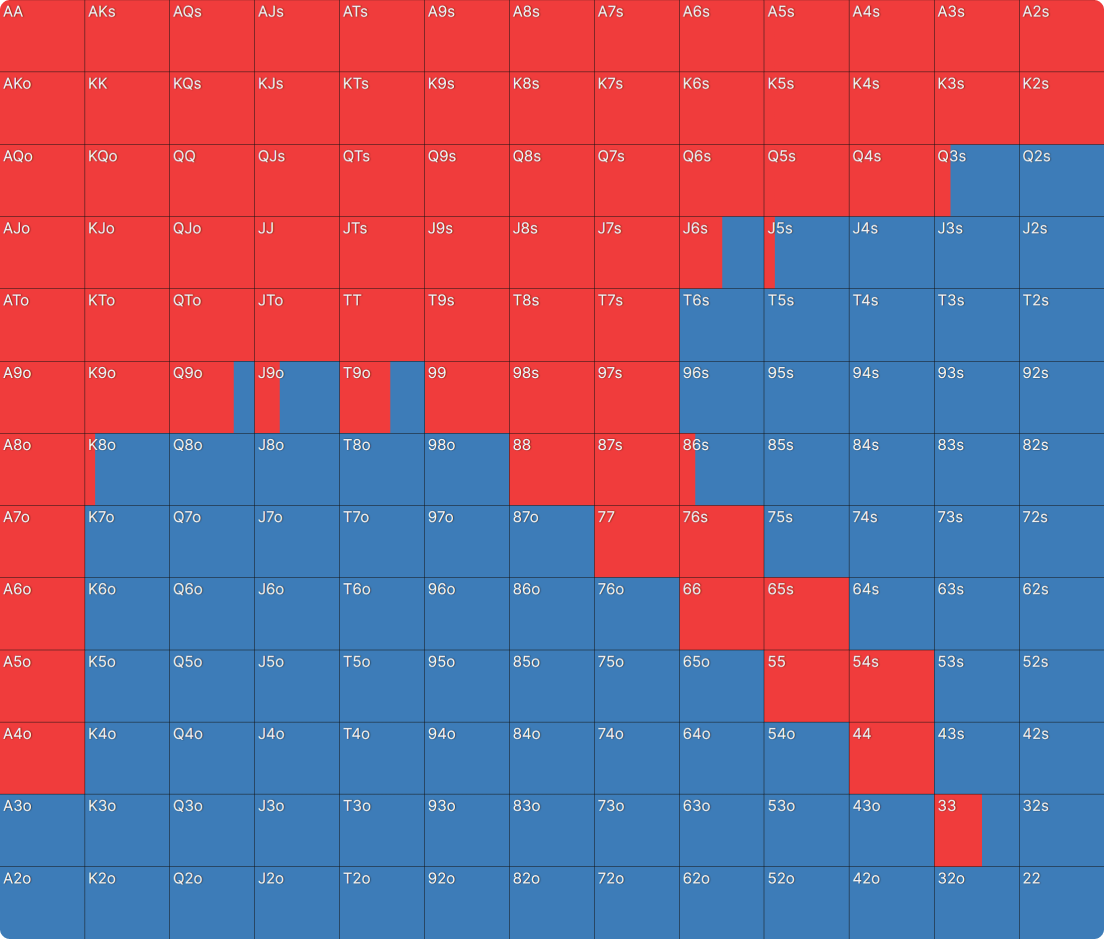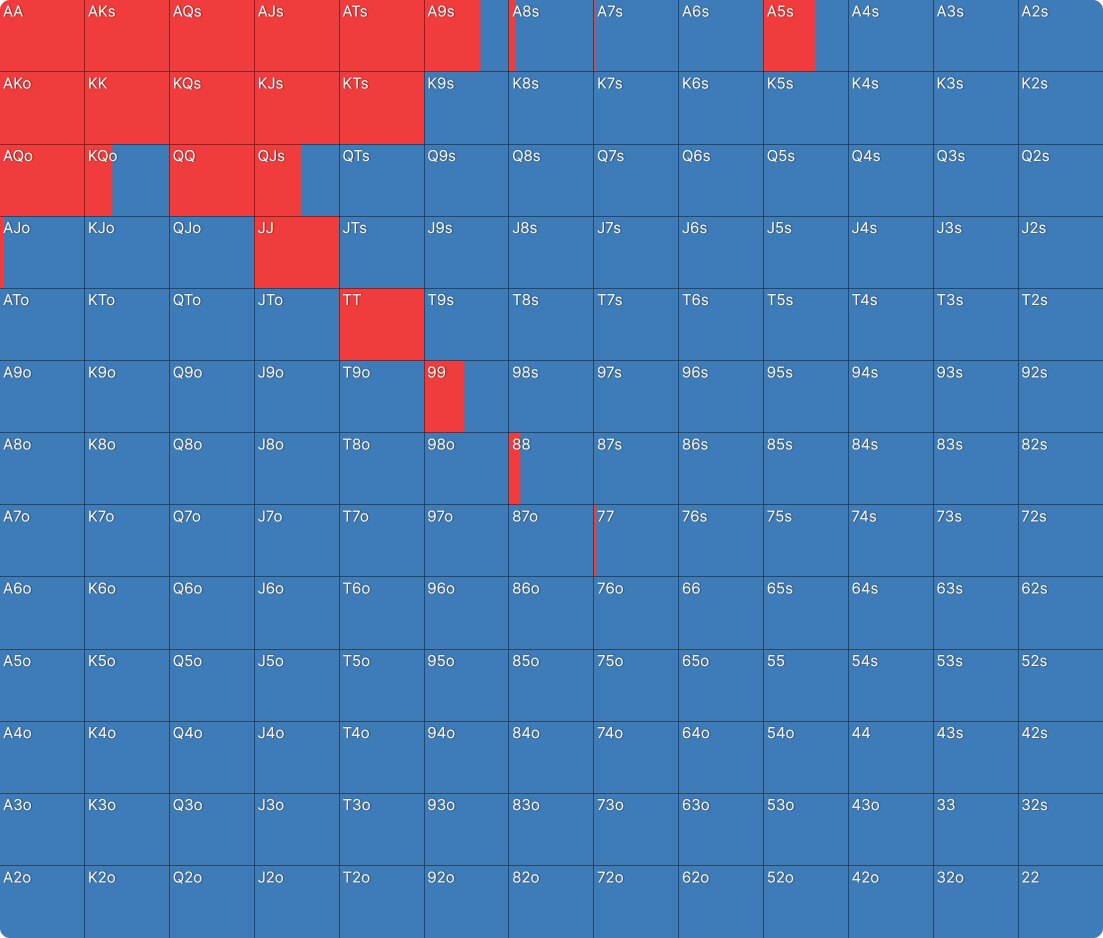Using the 80/20 Rule in Poker
The Pareto Principle
The Pareto principle, or the ‘80/20 Rule’, is an economic theory that, when you learn about it, you will start to see in all aspects of life, including poker.
Named after Italian economist Vilfredo Pareto, who first observed it in the early 20th century, the principle suggests that:
Roughly 80% of outcomes come from 20% of causes.
Signor Pareto noticed an intriguing pattern while studying land ownership in Italy. He observed that approximately 80% of the land in Italy was owned by just 20% of the population. This observation led him to delve deeper into the concept, and he soon realized that this ratio seemed to apply to various other aspects of life and business.
There are an infinite number of 80/20 distributions that have been observed since then, including:
- In languages, the 20% most frequently used words account for 80% of the word occurrences.
- Microsoft reported that 80% of the errors and crashes in Windows and Office are caused by 20% of the bugs involved.
- In the US, around 20% of hospital patients use up 80% of the hospital resources.
- 80% of the pollution originates from 20% of all factories.
- This is a fun one for me personally. A friend of mine who owns a restaurant told me that 75% of the meals bought were the burger options, which account for 20% of his menu.
The distributions don’t have to be exactly 80/20, nor does the total number have to add up to 100. There are 75/25 distributions and, indeed, 90/20 distributions.
In domains where output is not path-dependent, i.e., when a previous action does not influence the next action, you are unlikely to see a Pareto distribution. However, when one outcome is influenced by the previous outcome, you will see an unequal distribution.
Wealth accumulation, for example, is path-dependent. Somebody who starts with a lot of money will have resources to educate themselves, which allows them to earn more money, and having that extra money might mean that a bank will give them favorable interest rates, and so on. A coinflip, however, is not path-dependent, so is not influenced by the previous coinflip and will follow a normal distribution over a large sample.
CEOs, thought leaders, and self-help gurus have used the Pareto principle to identify and exploit unequal distributions. If, for example, you are a business owner and discover that 80% of your revenue comes from just 20% of your customers (for example, middle-class males in their 40s), you may want to devote more of your time marketing to customers like them, since they have shown a willingness to buy. If you get 80% of your work done in the first 20% of your day, you might want to allocate your most important work tasks to be done in the morning when you are the most productive.
The Pareto Principle in Poker
There are so many ways in which you will spot unequal distributions in poker. For example, around 80% of your profits will likely come from 20% of your opponents, i.e., recreational players. Poker rooms have previously revealed that around 15% of the players win money, another unequal distribution. Roughly around 5% of the total players are ‘big winners,’ and 1% of them are making serious money for their stakes. An unequal distribution within an unequal distribution, within an unequal distribution…
Over the years, it has roughly been the case that 80% of the rake is generated by 15% of the players. These are the high-volume winning players, not the net-depositing losing players (who likely deposit over 80% of the money into the ecosystem).
These are stats I have seen first-hand from online poker operators, but you might be able to see something similar by looking at the winners and losers in your poker hand database.
If you have a large database of hands, you will also see that most of your profit will come from 20% of your hands (i.e., the 20% strongest hands in the game) (think a UTG opening range). Within that range, the top 20% of those hands (i.e., JJ+, AJs+, AQo+) will account for the most profit of all.
You only need to look at the EV of hands in GTO Wizard in the range above to see how unequal and top-heavy it is. In the above example, AA makes 10.05bb on average, whereas a hand like K8s only makes 0.01bb. Again, if you look in a large database of hands, you will see that AA has made the most money for you by far, then KK, and so on. A very small number of hands will make up most of your profit.
Another reliable unequal distribution can be found when looking at your winnings by position. For example, you are probably losing money from the blinds, while the BTN and CO are likely to account for most of your profits.
Pareto Distributions in Poker Study
The Pareto principle gave me an excuse to share perhaps my favorite Tombos21 video:
In the video, he shared his ‘Spot Importance’ spreadsheet, a tremendously useful tool. It shows you the most important postflop scenarios to master in order. This is based both on the frequency that they occur and also the average pot size.
For example, SB vs BB single-raised pot is the most valuable scenario in poker because we always have money invested in the pot in either seat. It, therefore, has a high practice priority. The idea is that you get your GTO Wizard score up to a certain threshold for this spot, then move on to the next one, which is BTN vs BB.
If you are uncertain about what to drill, the most frequent spots in this spreadsheet are a great place to start. It’s tempting to want to study the UTG vs UTG1 3-bet spot you played the other day and in which you got coolered, but those situations happen rarely, and they often play themselves. It is much more useful to know how to play second pair on a K82 flop as BTN vs BB in an SRP because lots of similar situations will come up at the tables where the lessons transfer over.
The spots listed in the spreadsheet make up 32.74% of all the heads up spots in poker.
However, single-raised pots vs the BB make up 22% of the total amount of heads up spots, and they are all the first priority spots in the spreadsheet. This looks like a Pareto distribution. 22% of the spots in heads up poker make up the most important area of study.
Go one step further, SB vs BB is the number one priority study spot, and this is 20% of that subgroup of SRP vs BB. A Pareto distribution within a Pareto distribution…
So, you can exploit a Pareto distribution in poker by drilling single-raised pots against the BB.
The Matthew Principle
The cousin of the Pareto principle is the Matthew principle or the principle of cumulative advantage. This is the tendency for success to beget more success. This is where the common adage ‘the rich get richer and the poor get poorer’ comes from.
The name comes from Matthew 25:29:
The Matthew principle is explained by preferential attachment, where wealth is distributed based on how much somebody already has. We have all seen real-life examples of this. Wealthy people are often able to borrow money at low interest rates, and their wealth benefits from compounding. Poor people, by contrast, are seen as higher credit risks and, as such, can only borrow money with excessive interest rates. They tend to get the negative end of compounding because they are in debt.
A simpler way to explain the Matthew principle is virtuous or vicious cycles.
The Matthew Principle in Poker
We see many examples of the Matthew principle in poker. For example, the best players in the world get to play on the Triton tour, where there is a higher ratio of recreational players. The very best even get invited to the Pro/Am games with a 50/50 split of amateur and professional. The difference in ability between a Triton grinder and a professional who plays $5ks might be quite small, but the potential earning opportunities are much greater for the Stephen Chidwicks of the world.
Contrast this with micro stakes, which is notoriously hard to get out of for some players because the rake is high, and you are not earning enough money to justify expensive training courses/tools.
There is also a version of the Matthew principle in the game itself, which is the ICM benefit of being a chip leader.
Let’s consider these three near-bubble spots where the average stack size is 40bb. We will focus on how UTG’s change in stack depth influences their opening strategy.
In the first situation, every player has 40bb. This is the UTG opening range:
This is also a near-bubble situation where the average stack is 40bb, but UTG has 100bb.
And lastly, another near-bubble situation with 40bb average, but in the other direction of the symmetric solution, with UTG as the short stack having 16bb:
If we consider the range where everyone has exactly 40bb as a ‘baseline’ range, then, as you can see, being the chip leader means you can play so many more hands profitably relative to that baseline. We go from 16.5% of hands to 35.8% of hands, more than double the baseline range. Being the chip leader enables that player to open early position with what looks more like a middle position range.
Likewise, being hamstrung by a short stack means that UTG can only play 7.4% of hands, less than half of the baseline range.
It’s not a perfect example because the stacks of the other players influence the strategy as well. But broadly speaking, in tournaments, having chips begets more chips.
There is a cumulative advantage to being a chip leader, and an equal disadvantage to being a short stack.
Conclusion
The Pareto principle states that a high percentage of the outputs are created by a small percentage of the inputs.
The Matthew principle explains how advantage begets more advantage, which leads to a small percentage of people having the bulk of all the outputs.
The common denominator of both principles is inequality in outputs. When one iteration is not influenced by the previous one (e.g., coinflips), there will be a normal distribution. When that is not the case, when your next action is influenced by the previous action, there will be an unequal distribution.
Pareto in Poker
From a poker perspective, the Pareto principle clearly shows us that some things are more useful to focus on than others. Prioritizing, for example, SB vs BB single-raised pots over UTG vs UTG1 3-bet pots in your poker study will have a much greater upside.
Matthew in Poker
The Matthew principle, among other things, explains why some players have breakout success and others struggle. Success in poker tends to beget more success, whether that is because it opens the door to bigger games, softer games, greater learning opportunities, staking, and even things like sponsorship.
If you have a large database of hands, I implore you to look for some Pareto distributions of your own. Once you are aware of this concept, you see it everywhere. It’s like being able to see the matrix in some sense 😎
The BB’s incentives for calling an SB preflop raise differ from those of a cold-caller facing a raise from, say, LJ or CO. And the SB’s incentives for raising differ from those of an open-raiser in any other position.
Author
Barry Carter
Barry Carter has been a poker writer for 16 years. He is the co-author of six poker books, including The Mental Game of Poker, Endgame Poker Strategy: The ICM Book, and GTO Poker Simplified.
Wizards, you don’t want to miss out on ‘Daily Dose of GTO,’ it’s the most valuable freeroll of the year!
We Are Hiring
We are looking for remarkable individuals to join us in our quest to build the next-generation poker training ecosystem. If you are passionate, dedicated, and driven to excel, we want to hear from you. Join us in redefining how poker is being studied.



